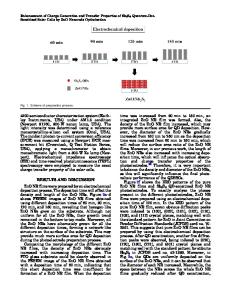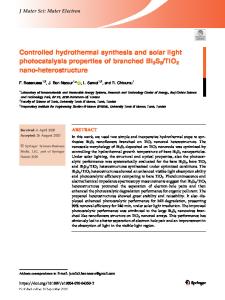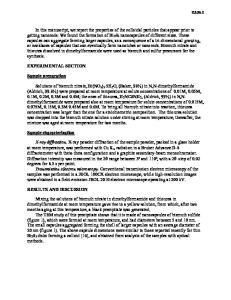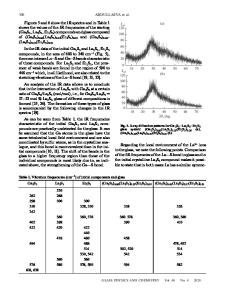Surfactant-mediated self-assembly of Sb 2 S 3 nanorods during hydrothermal synthesis
- PDF / 684,190 Bytes
- 9 Pages / 584.957 x 782.986 pts Page_size
- 14 Downloads / 545 Views
Nini R. Mathews and Xavier Mathewb) Instituto de Energías Renovables, Universidad Nacional Autónoma de México, Temixco 62580, Morelos, México (Received 21 September 2016; accepted 18 November 2016)
In the present work, we report the development of phase pure and highly crystalline stibnite Sb2S3 nanostructures by a surfactant-mediated hydrothermal method. Polyvinylpyrrolidone (PVP) as the surfactant has a striking effect on the assembly of nanorods into dumbbell shaped nanorodbundles. While nanorods with high aspect ratio were formed in absence of the surfactant, dumbbell shaped nanorod bundles were obtained using the surfactant. The structural, morphological, and optical properties were examined by X-ray diffraction (XRD), Raman scattering, scanning electron microscopy (SEM), energy dispersive x-ray spectroscopy, x-ray photoelectron spectroscopy (XPS), and UV–visible spectrophotometer. Both XRD and Raman spectroscopy confirmed the formation of orthorhombic phase pure stibnite (Sb2S3). The ratio of Sb to S is found to be close to 2:3, corresponding to Sb2S3. The optical band gap varied in the range of 1.65–1.68 eV depending on the concentration of the surfactant.
I. INTRODUCTION
Nanostructured materials based on layer-structured transition metal chalcogenides have found diverse applications in electronic, optical, and semiconductor devices.1 Most of the useful properties of layered structures arise from the highly anisotropic physical properties which are due to the weak interaction between layers consisting of a monolayer of metal atoms surrounded by covalently bonded chalcogen atoms.2 In this context, antimony sulfide (Sb2S3), a direct band gap semiconductor (V-VI group) with orthorhombic crystal structure is a promising functional material for its good photovoltaic properties,3,4 broad spectral response,5 and high thermoelectric power.6 Utilizing its unique properties Sb2S3 has been used in solar energy conversion,7,8 photocatalysis,9 thermoelectric cooling technologies,10 and optoelectronic devices in IR region.11,12 It is well documented that the physical and chemical properties of nanostructures are highly influenced by size, shape, crystal structure, and exposed crystal facets of the material.13 In recent years, one-dimensional materials have been the focus of intensive research due to their distinct physical properties determined by their special shapes and are being increasingly explored for energy application and other optoelectronic devices.14,15 Considering the technological importance, Contributing Editor: Gary L. Messing Address all correspondence to these authors. a) e-mail: [email protected] b) e-mail: [email protected] DOI: 10.1557/jmr.2016.470
synthesis of morphology controlled Sb2S3 nanocrystals with high yield has drawn much attention over the past few years. Alemi et al. reported the preparation of Sb2S3 nanorods by complex decomposition approach via hydrothermal method.16 Belts, tubes, and nanowires of Sb2S3 were prepared by thermal decomposition of antimony molecular precursors (xanthate) followe
Data Loading...











